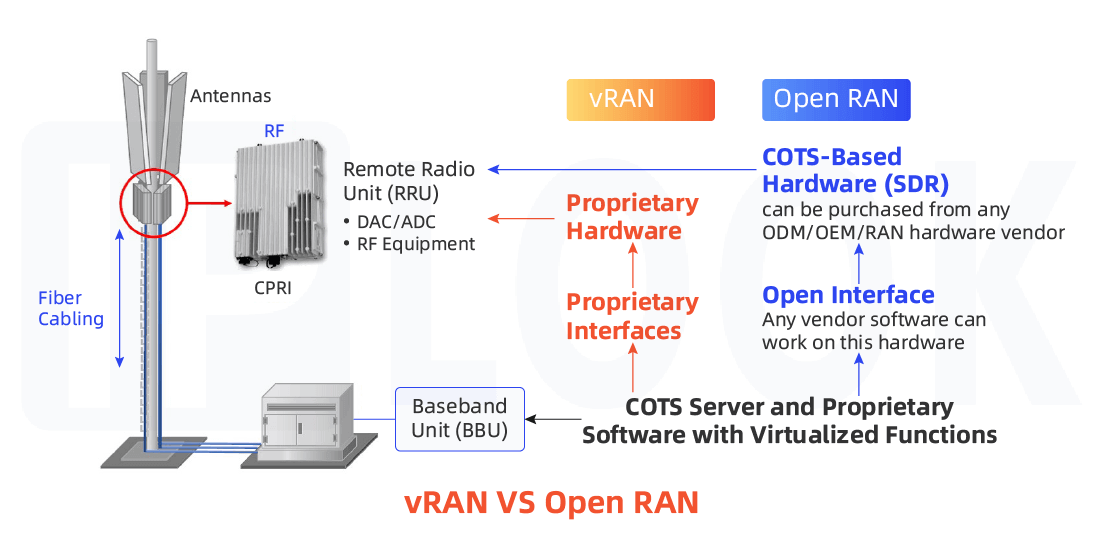Does Virtual RAN #vRAN equal #OpenRAN?
Not exactly.
vRAN
With vRAN, the proprietary radio hardware remains as it is, but the BBU gets replaced by a COTS server rather than being proprietary BBU hardware. The software that runs on the BBU is virtualized to run on any COTS server. But the proprietary interfaces between radios and COTS-based BBU remain as they are.
So, though RAN functions are virtualized on a COTS server, the interface between the BBU and RRU / RRH is not an open interface, so any vendor’s software cannot work with the RRU / RRH unless the interfaces become open. To use the analogy from the way we described legacy RAN earlier, vRAN consists of vendor A radio and vendor A software running on a COTS BBU. An operator cannot put vendor B software on the same COTS BBU unless the interface to the vendor A radio is open. So, vRAN can still create vendor lock-in.
Open RAN
The key with Open RAN is that the interface between the BBU and RRU / RRH is an open interface, so, any vendor’s software can work on any open RRU / RRH. More open interfaces enable the use of one supplier's radios with another's processors – which is not possible with vRAN.
Open RAN is a movement to define and build 2G, 3G, 4G and 5G RAN solutions based on a general-purpose, vendor-neutral hardware and software-defined technology with open interfaces between all the components. Open RAN Is the disaggregation of hardware and software: the RRU / RRH hardware becomes a GPP-based or COTS hardware that can be purchased from any ODM, OEM or RAN hardware vendor (Vendor A). The BBU is the same as in the case of vRAN: a COTS server + a vendor’s (Vendor B) proprietary software with virtualized functions. Open RAN makes the RAN open within all aspects and components, with the interfaces and operating software separating the RAN control plane from the user plane, building a modular base station software stack that operates on commercial-off-the-shelf (COTS) hardware, with open north- and south-bound interfaces. This software-enabled Open RAN network architecture enables a “white box” RAN hardware – meaning that baseband units, radio units and remote radio heads can be assembled from any vendor and managed by Open RAN software to form a truly interoperable and open “best of breed” RAN. This way, the underlying hardware layer (radios from vendor A and COTS servers) can stay on site when a mobile operator decides to do a swap; the only thing that gets replaced is the software from vendor B to vendor C.



